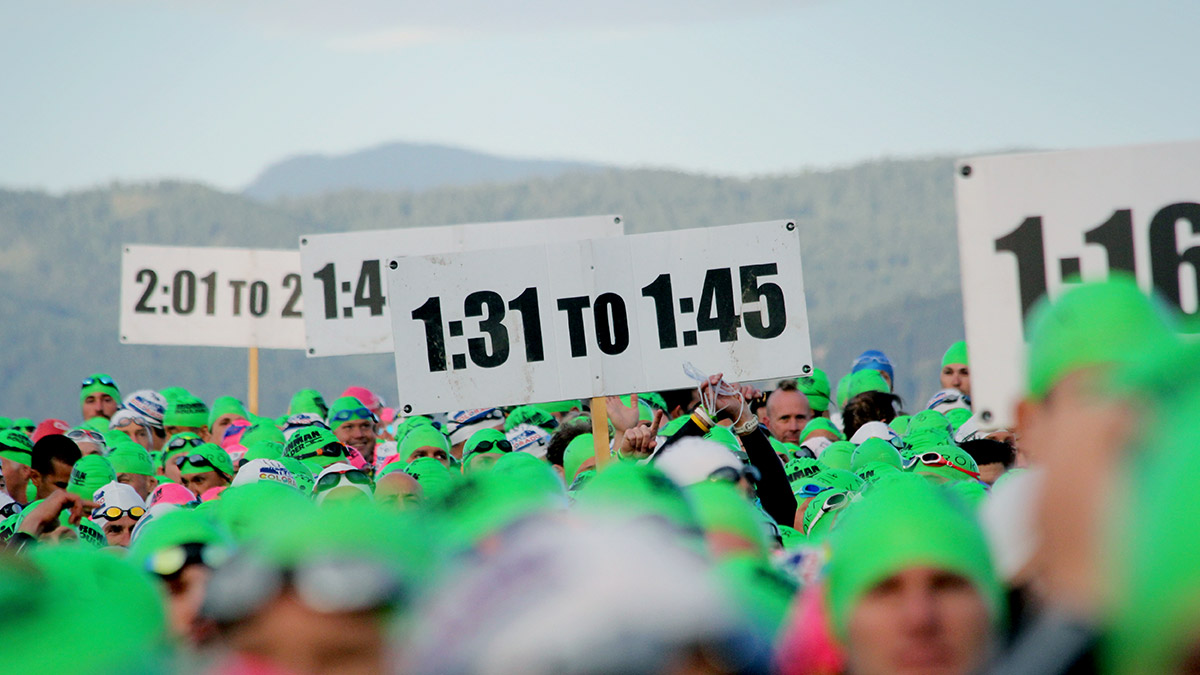It is not always easy to find an open water venue for swim practice. Winter months, late work hours and lack of safety support, among other reasons, leave many athletes neglecting their open water swimming skills. While nothing compares to true open water experience, many athletes actually prefer to learn in a safe environment where they are comfortable, have access to clear water and a wall to hang on to. Here are five ways you can hone your open water swimming skills without open water access.
Start with the Basics
If you don’t already breathe bilaterally, start today. Being comfortable breathing to both sides provides more than balanced muscle development. In open water swimming, you can breathe away from waves, sun, competitors and other obstacles that might obstruct your breath or vision. Practicing flip turns will speed up your interval times as well as develop spatial awareness, which can be useful if you get dunked or need to regain your space. If you plan on racing with a wetsuit, practice swimming with a pull buoy or “sim shorts” to get a feel for the buoyancy a wetsuit will provide and how it impacts your body position.
Bring a Buddy
Take turns drafting off another swimmer, sometimes on their hips and other times on their feet. In a head-on current, you’ll need to be able to swim behind another swimmer; in a cross-current, it’s best to be on their hip, putting them between you and the incoming current. In open water races, contact with other swimmers is also commonplace. Practice bumping into each other so you can learn how to find clean water and navigate to safety without disrupting your stroke. A larger group of swimmers can help simulate close proximity in a group, which you are likely to encounter in a race.
Practice Sighting and Drift
Put something highly visible, like a bright water bottle or kickboard at the end of your lane. Periodically, practice sighting while working through your normal workout. To take things to the next level, have somebody move the object so you have to search for it. Knowing your drift is another important element of open water efficiency. Pick a target, make sure there is nothing to swim into, close your eyes and take twenty strokes toward your target. Stop and see if you are on track or if you have drifted to the left or right. This information will help you compensate for body imbalances or tendencies to drift to one side, reducing the frequency of sighting.
Add Specificity
If you plan to race at a venue with an in-water start, practice starts that mimic the race. Start under the flags and get used to generating momentum without a push from the wall. During your intervals, flip before the wall to practice getting up to speed under your own power. If your race requires a jump entry, practice jumping into deep water, getting horizontal, and achieving forward progress; or use the shallow end to practice a wading start. If your shallow end is shallow enough or if your pool has a ramp, practice dolphin dives if you plan to use them on race day.
Rounding Buoys
Second to the race start, most commotion happens while rounding buoys. If your pool has a diving well, toss a beach ball or pull buoy in the middle and practice left, right, sharp and gradual turns. Techniques can range from one arm turns to the fancy corkscrew turn.
At SwimRVA, in Richmond, VA, we have a Winter Open Water program where we work with swimmers on open water swimming skills—but if you don’t have access to a similar setup, perhaps you can convince your local pool to occasionally take out a lane line or two so you can practice turns.










